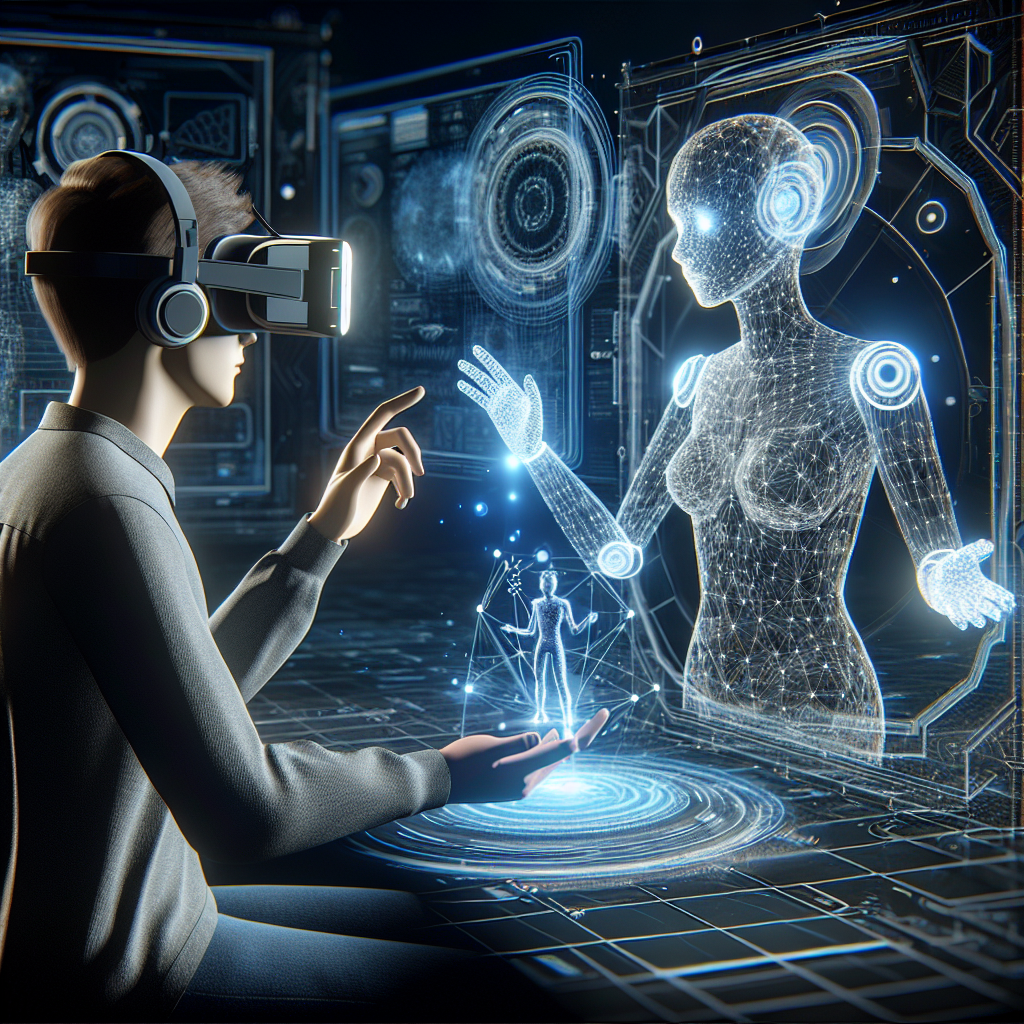Conversational AI: Enhancing User Experience in Virtual Reality
Virtual reality (VR) technology has come a long way in recent years, with advancements in graphics, audio, and motion tracking allowing for more immersive and engaging experiences. However, one area that has seen significant development in enhancing the user experience is the integration of conversational AI.
Conversational AI, also known as chatbots or virtual assistants, are artificial intelligence programs that can engage in natural language conversations with users. By integrating conversational AI into VR experiences, developers can create more interactive and dynamic environments that respond to user input in real-time.
One of the key benefits of using conversational AI in VR is the ability to create more personalized and engaging experiences for users. By incorporating chatbots that can understand and respond to users’ questions and commands, developers can tailor the VR experience to the individual preferences and needs of each user. This not only enhances the overall user experience but also increases user engagement and satisfaction.
Another advantage of using conversational AI in VR is the ability to provide users with helpful guidance and information as they navigate the virtual environment. Chatbots can act as virtual tour guides, providing users with directions, explanations, and recommendations as they explore different areas of the VR world. This helps users feel more comfortable and confident in their interactions with the virtual environment, leading to a more immersive and enjoyable experience.
Additionally, conversational AI can also be used to enhance social interactions in VR. By incorporating chatbots that can engage in realistic conversations with users, developers can create more dynamic and engaging multiplayer experiences. Chatbots can act as virtual companions, providing users with conversation and companionship as they interact with other players in the virtual world. This can help to create a more social and inclusive environment in VR, fostering connections and relationships between users.
Overall, the integration of conversational AI in VR has the potential to revolutionize the way users interact with virtual environments. By providing personalized guidance, information, and social interactions, chatbots can enhance the user experience and make VR more engaging and enjoyable for all users.
FAQs:
Q: What are the benefits of using conversational AI in VR?
A: Conversational AI can enhance the user experience in VR by providing personalized guidance, information, and social interactions. Chatbots can create more engaging and immersive experiences for users, leading to increased user satisfaction and engagement.
Q: How does conversational AI work in VR?
A: Conversational AI programs, also known as chatbots or virtual assistants, engage in natural language conversations with users. By integrating chatbots into VR experiences, developers can create dynamic and interactive environments that respond to user input in real-time.
Q: How can conversational AI enhance social interactions in VR?
A: By incorporating chatbots that can engage in realistic conversations with users, developers can create more dynamic and engaging multiplayer experiences. Chatbots can act as virtual companions, providing users with conversation and companionship as they interact with other players in the virtual world.
Q: What are some examples of conversational AI in VR?
A: Some examples of conversational AI in VR include virtual tour guides that provide users with directions and recommendations, virtual companions that engage in social interactions with users, and chatbots that respond to user questions and commands in real-time.

